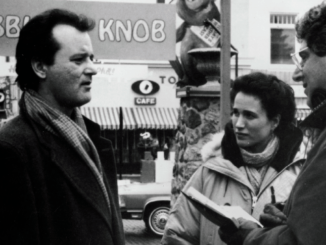
by Lou Bertini

New York State now offers a Film Production Tax Credit program. After much haggling between the senate and the legislature over the exact form it would take, it was signed into law by Governor George Pataki on August 20. “Qualified productions” will now receive a 10 percent tax credit on “qualified production costs.” The intent of the New York government is to stimulate film and television production in the state, and to compete with tax credit programs offered by other countries, most notably Canada.
This particular legislation began when Steiner Studios, a new facility occupying the old Brooklyn Navy Yards, sought a tax credit for itself and all work done within it under the New York “Empowerment Zone Program.” Silvercup, Kaufman-Astoria, and other studios found out about it and objected, citing what they saw as preferential treatment. New York’s Council of Motion Picture and TV Unions (COMPTU) and other entertainment industry Guilds began a campaign to extend the credit to cover the entire state. Political support grew, and real legislation soon began to take shape.
The staff and New York board members of the Editors Guild played a prominent role in the lobbying effort. A letter-writing campaign from the Guild membership to New York state representatives urging passage of this bill was highly influential in the final outcome. Assistant Executive Director Paul Moore received a personal letter of thanks from the State Senate Majority Leader Joseph Bruno, who also sent congratulations to Local 700 members for their efforts.
Paul Moore spoke of the economic effects that are brought by film and television productions to the larger New York community, such as restaurants, hotels and support services.
To be eligible for the credit at least 75 percent of all production costs must be incurred at a “qualified film production facility” in New York. “Qualified films” are features, television films, television series and pilots. At one point the inclusion of commercial production was considered, but ultimately left out. If the current law proves successful, commercials will likely be added at a later date. There was evidently a great deal of debate over the shape of this 75 percent “trigger.” Many lawmakers wanted it set at 65 percent, but in the end they did not prevail.
At press time another bill is also on the verge of passage in New York City, which will add an additional 5 percent tax credit for work done within the city limits, under the same formula as above. At a recent hearing at New York’s City Hall, testimony was given by Moore, who spoke of the employment problems caused by runaway productions and job outsourcing. He stressed the strength of the labor pool in New York, and its need for employment. He also spoke of the economic effects that are brought by film and television productions to the larger New York community, such as restaurants, hotels and support services.
Together these credits will offer producers a 15 percent tax incentive. Although still less than the subsidies offered in Canada, it is felt that they may be just enough of a push to get producers to work in New York. According to the Mayor’s Office of Film and Television, several productions originally scheduled for Toronto have already changed course, and will now shoot in the city, including the Fox TV series Johnny Zero.





